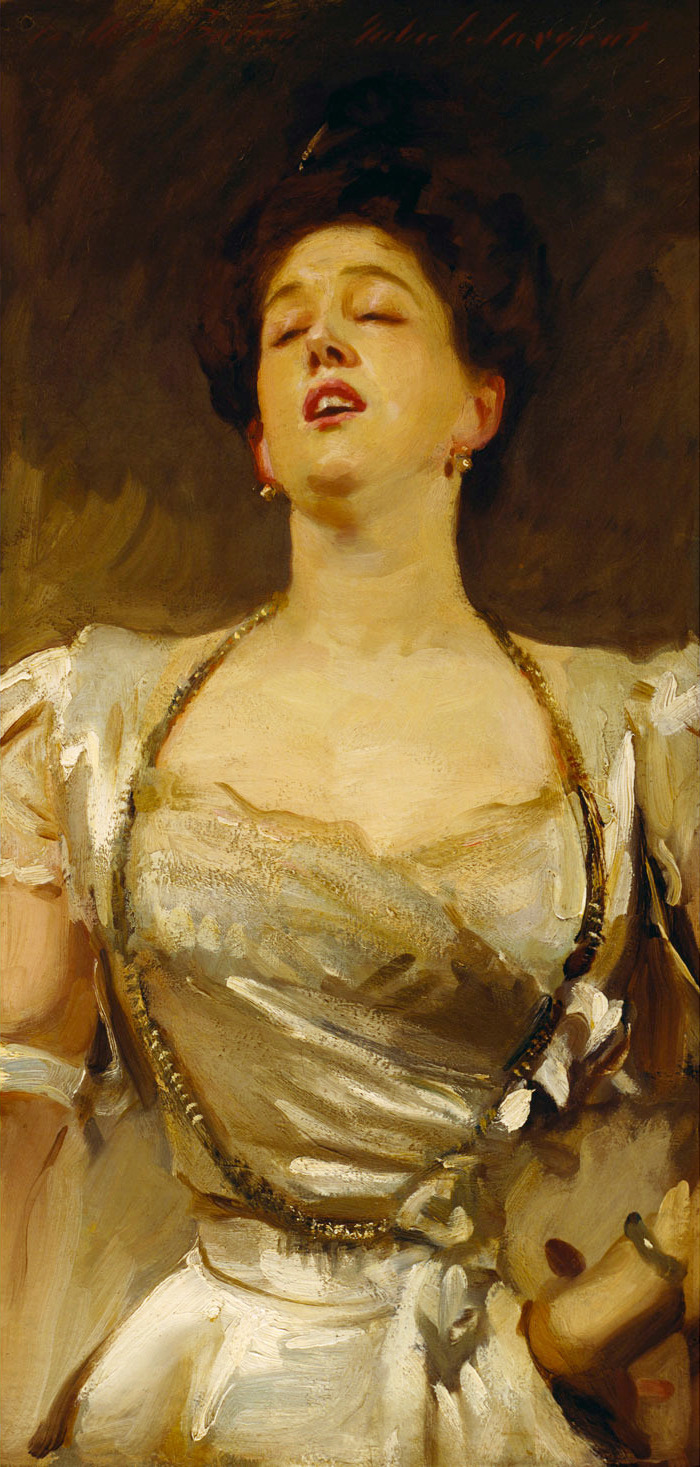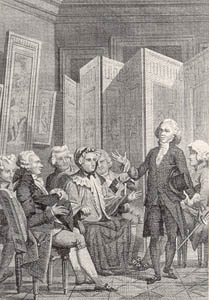|
The Well Of Loneliness
''The Well of Loneliness'' is a lesbian novel by British author Radclyffe Hall that was first published in 1928 by Jonathan Cape. It follows the life of Stephen Gordon, an Englishwoman from an upper-class family whose " sexual inversion" (homosexuality) is apparent from an early age. She finds love with Mary Llewellyn, whom she meets while serving as an ambulance driver in World War I, but their happiness together is marred by social isolation and rejection, which Hall depicts as typically suffered by "inverts", with predictably debilitating effects. The novel portrays "inversion" as a natural, God-given state and makes an explicit plea: "Give us also the right to our existence". Shortly after the book's publication, it had become the target of a campaign by James Douglas, editor of the ''Sunday Express''. Douglas wrote that "I would rather give a healthy boy or a healthy girl a phial of prussic acid than this novel." A British court judged it obscene because it defended "unn ... [...More Info...] [...Related Items...] OR: [Wikipedia] [Google] [Baidu] |
Radclyffe Hall
Marguerite Antonia Radclyffe Hall (12 August 1880 – 7 October 1943) was an English poet and author, best known for the novel ''The Well of Loneliness'', a groundbreaking work in lesbian literature. In adulthood, Hall often went by the name John, rather than Marguerite. Early life Marguerite Antonia Radclyffe Hall was born in 1880 at "Sunny Lawn", Durley Road, Bournemouth, Hampshire (now Dorset), to Radclyffe ("Rat") Radclyffe-Hall (1846-1898) and Mary Jane Sager (née Diehl). Hall's father was a wealthy philanderer, educated at Eton and Oxford but seldom working, since he inherited a large amount of money from his father, an eminent physician who was head of the British Medical Association; her mother was an unstable American widow from Philadelphia.Vargo, Marc E"Scandal: Infamous Gay Controversies of the Twentieth Century"pp. 56-57 Radclyffe's father left in 1882, abandoning young Radclyffe and her mother. However, he did leave behind a considerable inheritance for Radclyf ... [...More Info...] [...Related Items...] OR: [Wikipedia] [Google] [Baidu] |
Self-hatred
Self-hatred is personal self-loathing or hatred of oneself, or low self-esteem which may lead to self-harm. In psychology and psychiatry The term "self-hatred" is used infrequently by psychologists and psychiatrists, who would usually describe people who hate themselves as "people with low self-esteem". Self-hatred, self-guilt and shame are important factors in some or many mental disorders, especially disorders that involve a perceived defect of oneself (e.g. body dysmorphic disorder). Self-hatred is also a symptom of many personality disorders, including borderline personality disorder, as well as mood disorders like depression. It can also be linked to guilt for someone's own actions that they view as wrongful, e.g., survivor guilt. In social groups Self-hatred by members of ethnic groups, gender groups, and religions is postulated to be a result of internalization of hatred of those groups from dominant cultures. African-Americans Racial stereotyping of African-Americ ... [...More Info...] [...Related Items...] OR: [Wikipedia] [Google] [Baidu] |
Diana Souhami
Diana Souhami (born 25 August 1940) is an English writer of biographies, short stories and plays. She is noted for her unconventional biographies of prominent lesbians. Biography Souhami was brought up in London and studied philosophy at University of Hull. Before turning to writing biography, she worked in the publications department of the BBC. While there, she published short stories, wrote plays that were performed at Edinburgh Festival, The Kings Head in Islington, and broadcast as radio and television plays by the BBC. She devised an exhibition for the British Council called ''A Woman's Place: The Changing Picture of Women in Britain'', which in 1984 toured 30 countries. Her book based on this exhibition was published by Penguin Books. She also reviewed books and plays for newspapers. In 1986 she was approached by Pandora Press and received a commission to write a biography of the artist Gluck. Her life of Gluck was her only book in which she used a birth-to-death approac ... [...More Info...] [...Related Items...] OR: [Wikipedia] [Google] [Baidu] |
Romaine Brooks
Romaine Brooks (born Beatrice Romaine Goddard; May 1, 1874 – December 7, 1970) was an American painter who worked mostly in Paris and Capri. She specialized in portrait painting, portraiture and used a subdued tonal Palette (painting), palette keyed to the color gray. Brooks ignored contemporary artistic trends such as Cubism and Fauvism, drawing on her own original aesthetic inspired by the works of Charles Conder, Walter Sickert, and James McNeill Whistler. Her subjects ranged from anonymous models to titled aristocrats. She is best known for her images of women in androgynous or masculine dress, including her self-portrait of 1923, which is her most widely reproduced work. Although her family was wealthy, Brooks had an unhappy childhood after her alcoholic father abandoned the family; her mother was emotionally abusive and her brother mentally ill. By her own account, her childhood cast a shadow over her whole life. She spent several years in Italy and France as a poor art st ... [...More Info...] [...Related Items...] OR: [Wikipedia] [Google] [Baidu] |
Salon (gathering)
A salon is a gathering of people held by an inspiring host. During the gathering they amuse one another and increase their knowledge through conversation. These gatherings often consciously followed Horace's definition of the aims of poetry, "either to please or to educate" (Latin: ''aut delectare aut prodesse''). Salons in the tradition of the French literary and philosophical movements of the 17th and 18th centuries were carried on until as recently as the 1920s in urban settings. Historical background The salon was an Italian invention of the 16th century, which flourished in France throughout the 17th and 18th centuries. The salon continued to flourish in Italy throughout the 19th century. In 16th-century Italy, some brilliant circles formed in the smaller courts which resembled salons, often galvanized by the presence of a beautiful and educated patroness such as Berta Zuckerkandl, Isabella d'Este or Elisabetta Gonzaga. Salons were an important place for the exchange of i ... [...More Info...] [...Related Items...] OR: [Wikipedia] [Google] [Baidu] |
Natalie Clifford Barney
Natalie Clifford Barney (October 31, 1876 – February 2, 1972) was an American writer who hosted a salon (gathering), literary salon at her home in Paris that brought together French and international writers. She influenced other authors through her salon and also with her poetry, plays, and epigrams, often thematically tied to her lesbianism and feminism. Barney was born into a wealthy family. She was partly educated in France, and expressed a desire from a young age to live openly as a lesbian. She moved to France with her first romantic partner, Eva Palmer. Inspired by the work of Sappho, Barney began publishing love poems to women under her own name as early as 1900. Writing in both French and English, she supported feminism and pacifism. She opposed monogamy and had many overlapping long and short-term relationships, including on-and-off romances with poet Renée Vivien and courtesan Liane de Pougy and longer relationships with writer Élisabeth de Gramont and painter Roma ... [...More Info...] [...Related Items...] OR: [Wikipedia] [Google] [Baidu] |
Princesse De Lamballe
Princesse (French 'princess') may refer to: *"Princesse", single hit for Julie Zenatti *Princesse (Nekfeu song) *La Princesse La Princesse is a 15-metre (50-foot) mechanical spider designed and operated by French performance art company La Machine. The spider was showcased in Liverpool, England, as part of the 2008 European Capital of Culture celebrations, travelling ... 15-metre (50-foot) mechanical spider designed and operated by French performance art company La Machine. See also * Princess (other) {{dab ... [...More Info...] [...Related Items...] OR: [Wikipedia] [Google] [Baidu] |
Marie Antoinette
Marie Antoinette Josèphe Jeanne (; ; née Maria Antonia Josepha Johanna; 2 November 1755 – 16 October 1793) was the last queen of France before the French Revolution. She was born an archduchess of Austria, and was the penultimate child and youngest daughter of Empress Maria Theresa and Emperor Francis I. She became dauphine of France in May 1770 at age 14 upon her marriage to Louis-Auguste, heir apparent to the French throne. On 10 May 1774, her husband ascended the throne as Louis XVI and she became queen. Marie Antoinette's position at court improved when, after eight years of marriage, she started having children. She became increasingly unpopular among the people, however, with the French ''libelles'' accusing her of being profligate, promiscuous, allegedly having illegitimate children, and harboring sympathies for France's perceived enemies—particularly her native Austria. The false accusations of the Affair of the Diamond Necklace damaged her reputation further ... [...More Info...] [...Related Items...] OR: [Wikipedia] [Google] [Baidu] |
Noël Coward
Sir Noël Peirce Coward (16 December 189926 March 1973) was an English playwright, composer, director, actor, and singer, known for his wit, flamboyance, and what ''Time'' magazine called "a sense of personal style, a combination of cheek and chic, pose and poise"."Noel Coward at 70" ''Time'', 26 December 1969, p. 46 Coward attended a dance academy in London as a child, making his professional stage début at the age of eleven. As a teenager he was introduced into the high society in which most of his plays would be set. Coward achieved enduring success as a playwright, publishing more than 50 plays from his teens onwards. Many of his works, such as '' |
Marcel Proust
Valentin Louis Georges Eugène Marcel Proust (; ; 10 July 1871 – 18 November 1922) was a French novelist, critic, and essayist who wrote the monumental novel ''In Search of Lost Time'' (''À la recherche du temps perdu''; with the previous English title translation of ''Remembrance of Things Past''), originally published in French in seven volumes between 1913 and 1927. He is considered by critics and writers to be one of the most influential authors of the 20th century. Background Proust was born on 10 July 1871 at the home of his great-uncle in the Paris Borough of Auteuil (the south-western sector of the then-rustic 16th arrondissement), two months after the Treaty of Frankfurt formally ended the Franco-Prussian War. His birth took place at the very beginning of the Third Republic, during the violence that surrounded the suppression of the Paris Commune, and his childhood corresponded with the consolidation of the Republic. Much of ''In Search of Lost Time'' concerns the ... [...More Info...] [...Related Items...] OR: [Wikipedia] [Google] [Baidu] |
Temple De L'Amour3
A temple (from the Latin ) is a building reserved for spiritual rituals and activities such as prayer and sacrifice. Religions which erect temples include Christianity (whose temples are typically called churches), Hinduism (whose temples are called Mandir), Buddhism, Sikhism (whose temples are called gurudwara), Jainism (whose temples are sometimes called derasar), Islam (whose temples are called mosques), Judaism (whose temples are called synagogues), Zoroastrianism (whose temples are sometimes called Agiary), the Baha'i Faith (which are often simply referred to as Baha'i House of Worship), Taoism (which are sometimes called Daoguan), Shinto (which are sometimes called Jinja), Confucianism (which are sometimes called the Temple of Confucius), and ancient religions such as the Ancient Egyptian religion and the Ancient Greek religion. The form and function of temples are thus very variable, though they are often considered by believers to be, in some sense, the "house" of ... [...More Info...] [...Related Items...] OR: [Wikipedia] [Google] [Baidu] |








